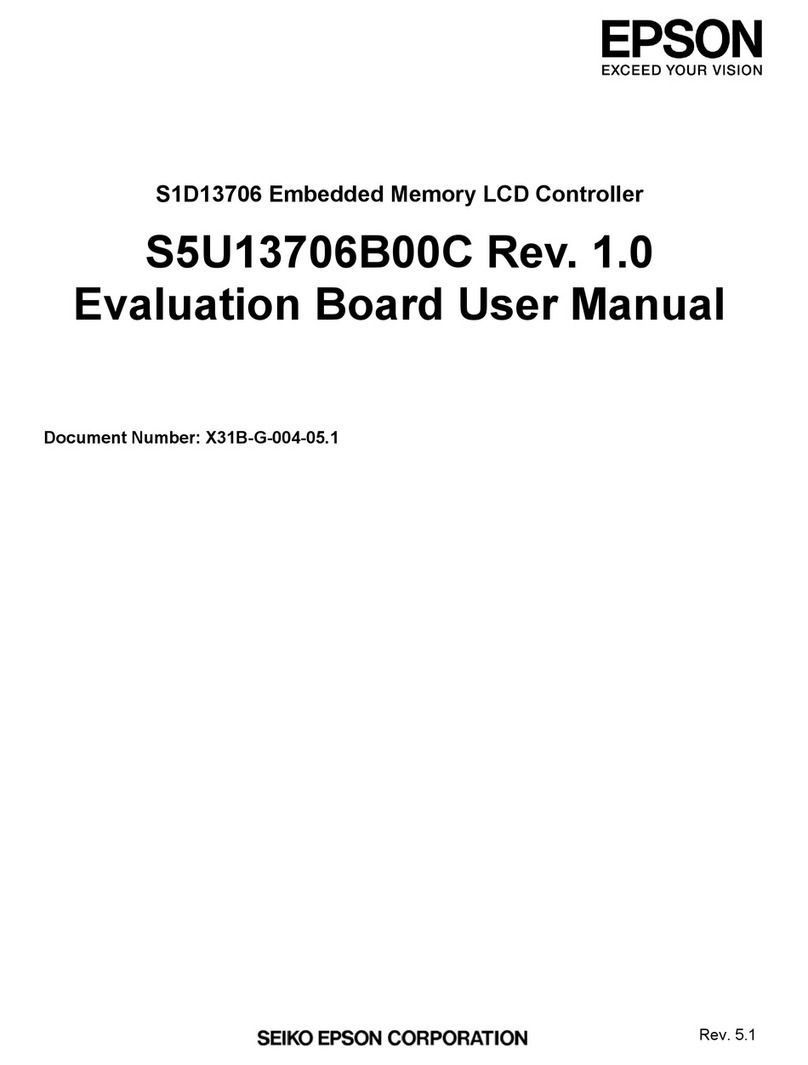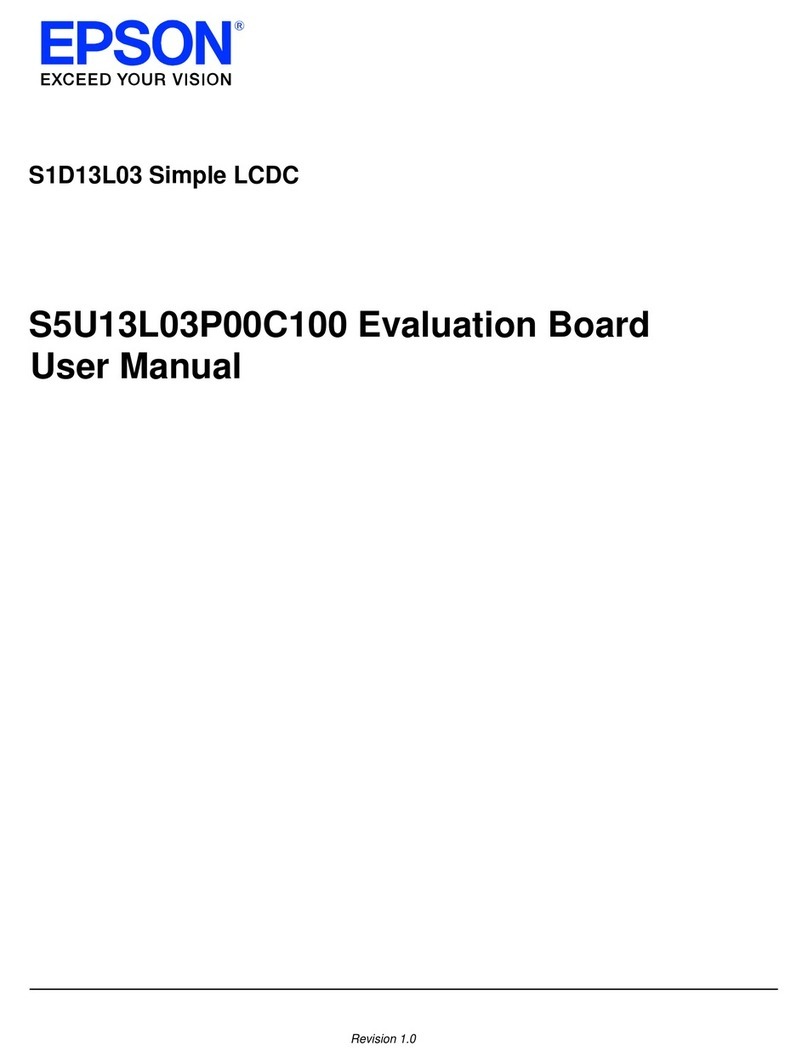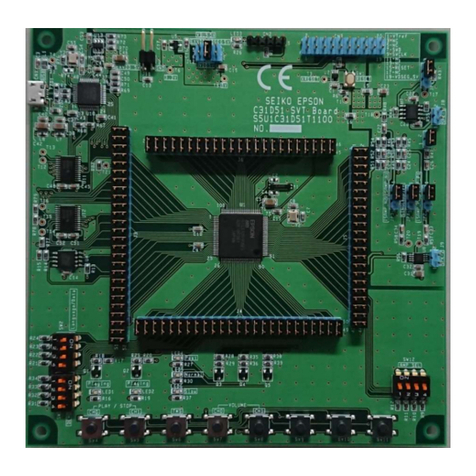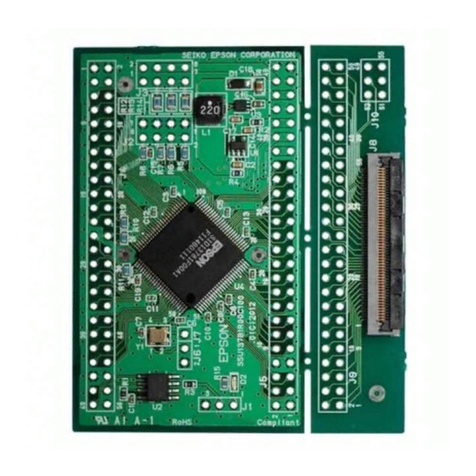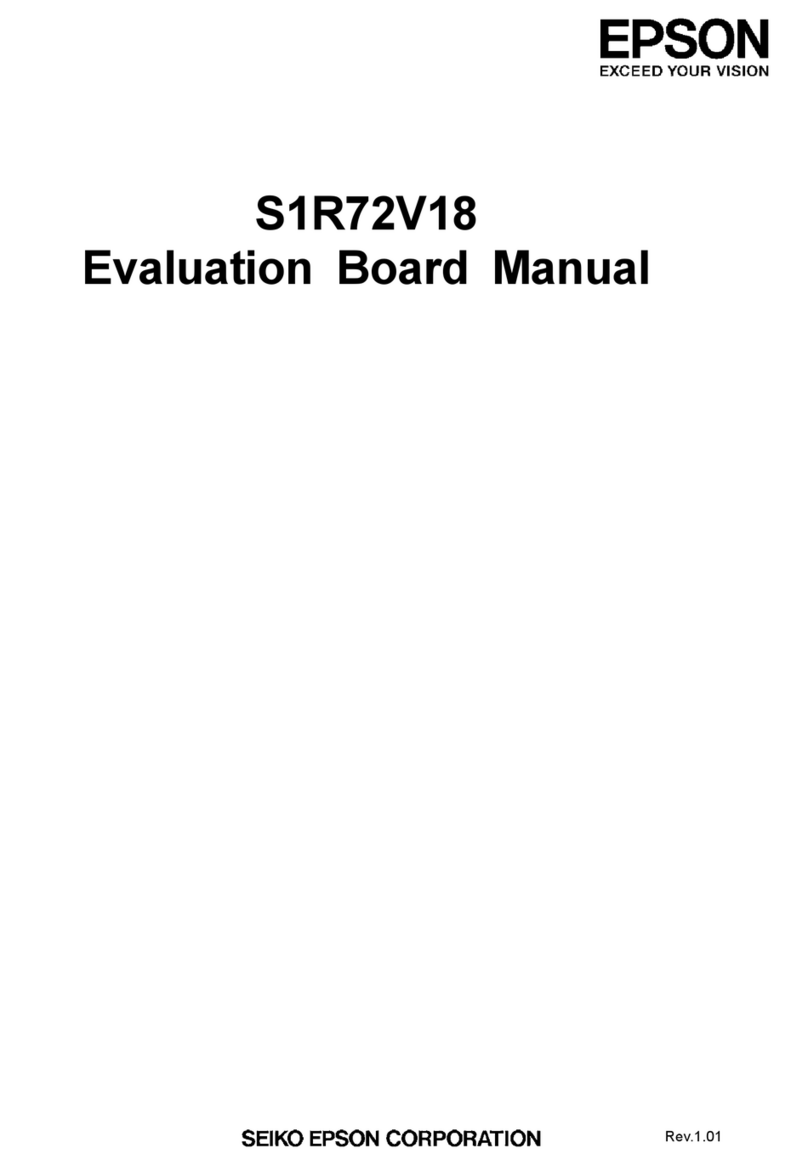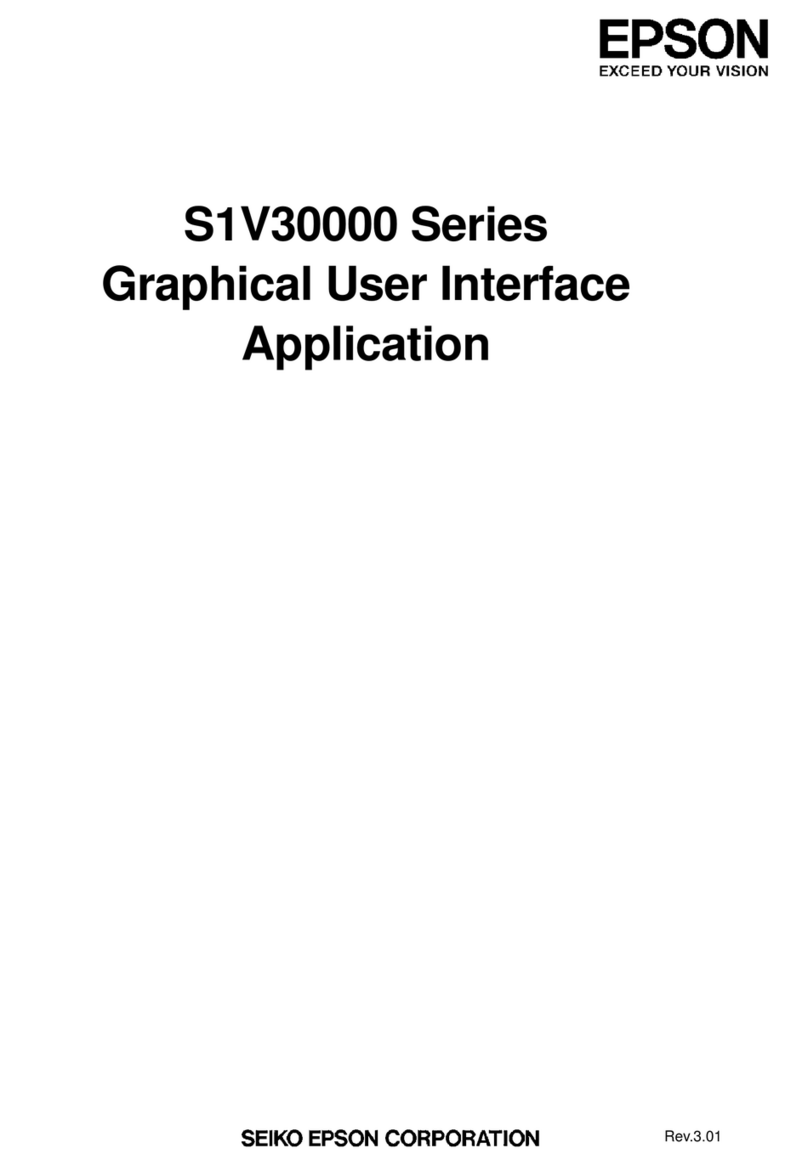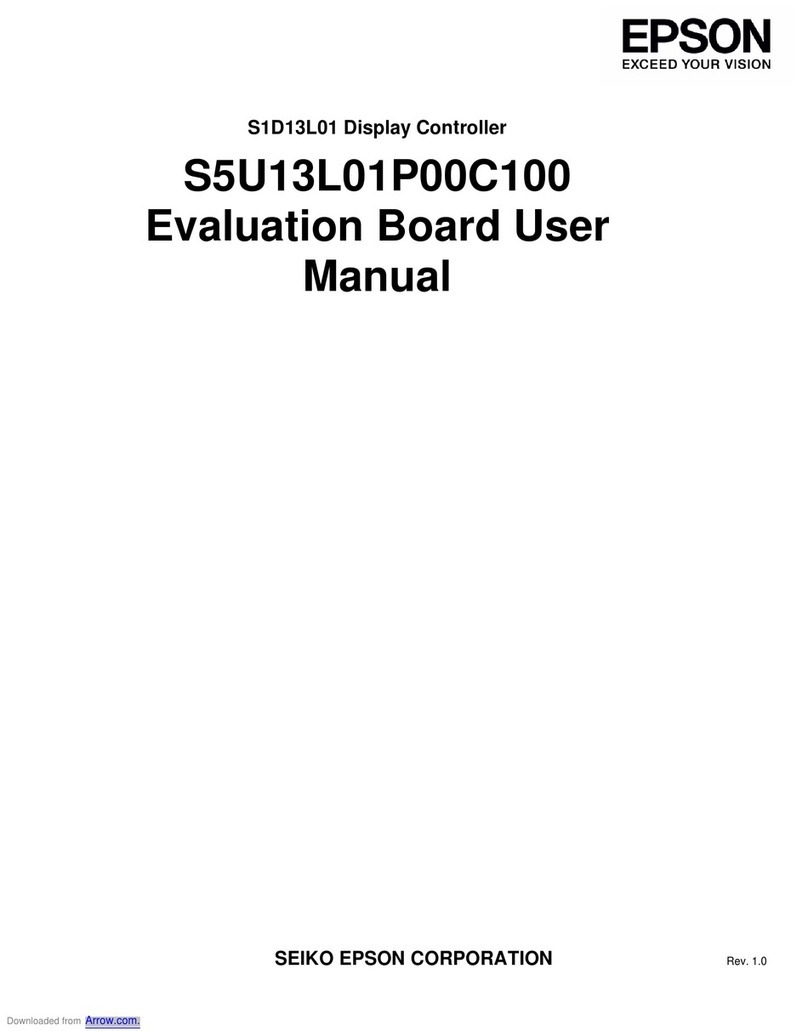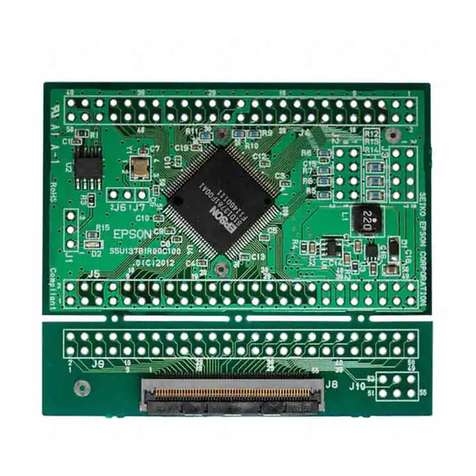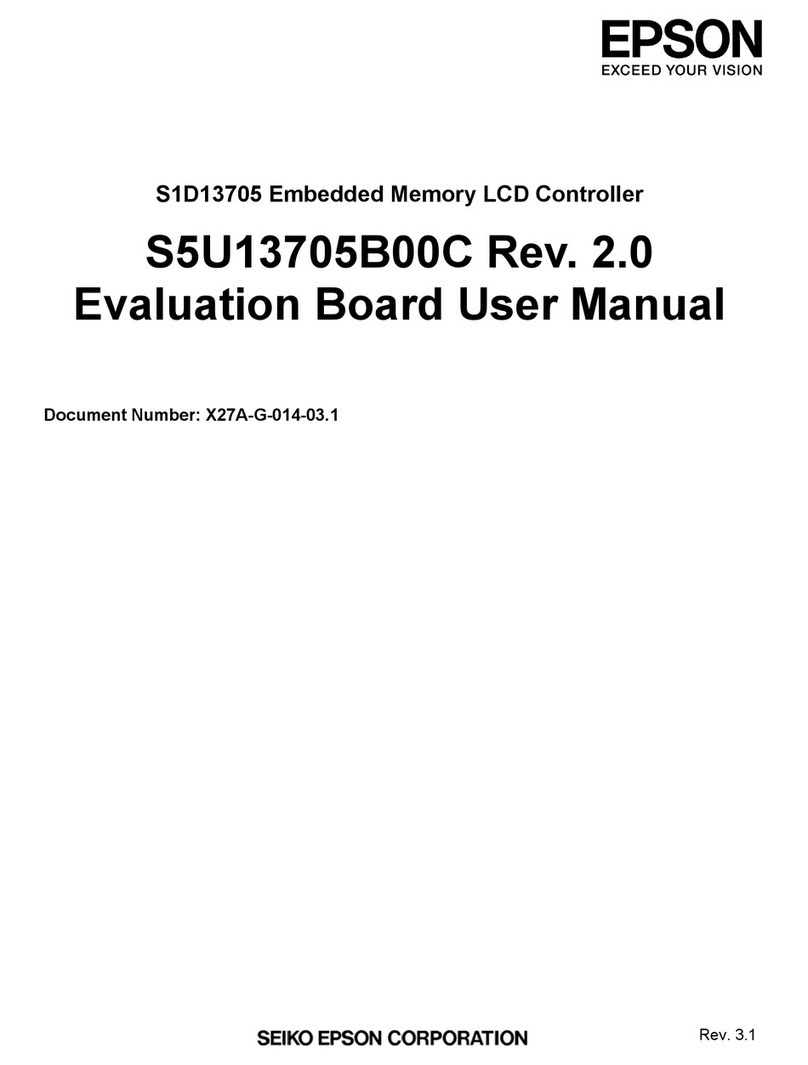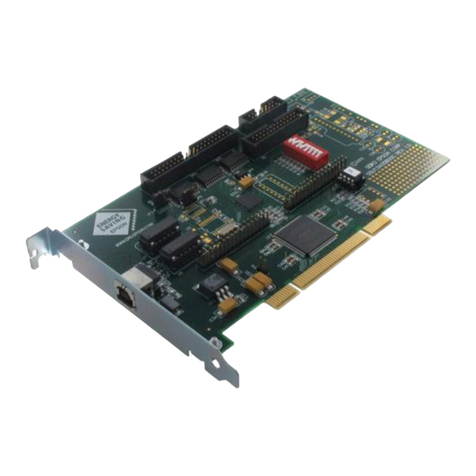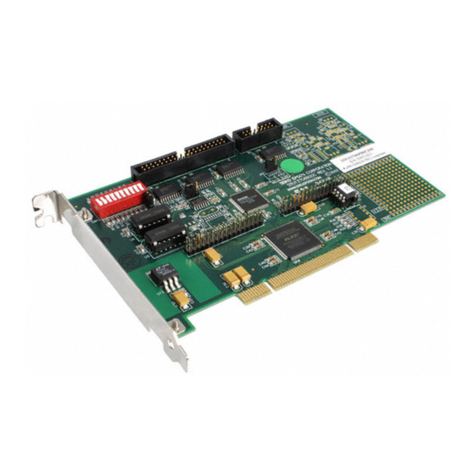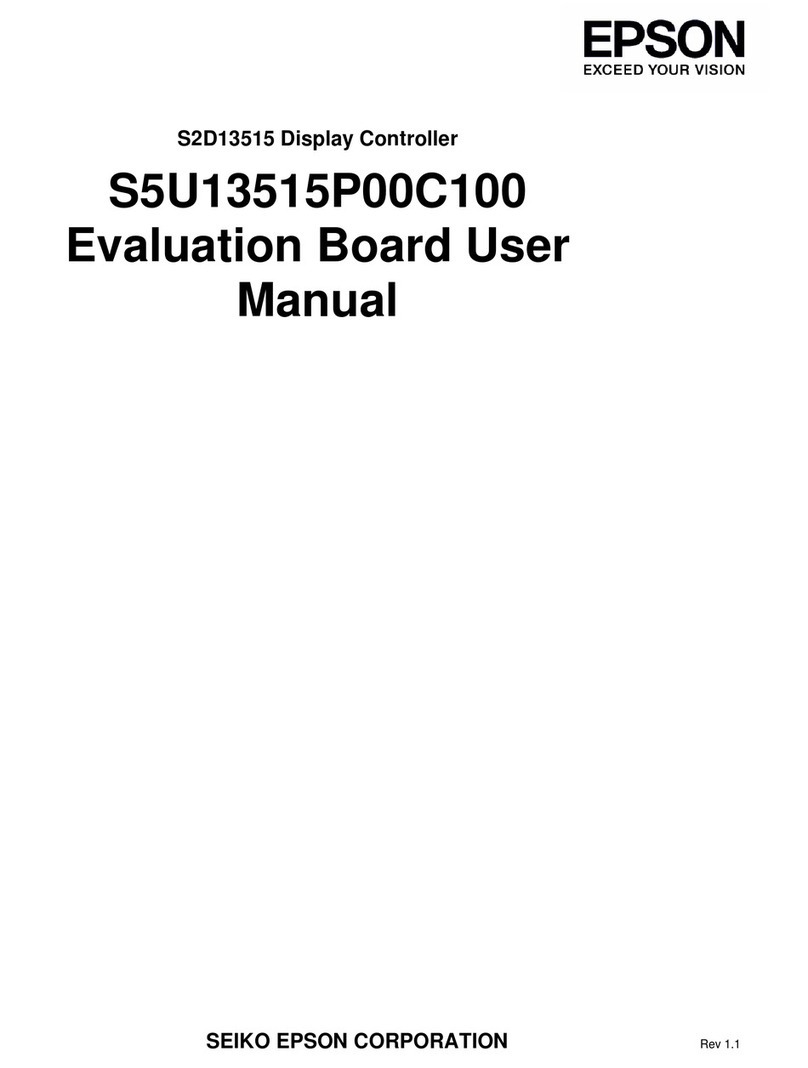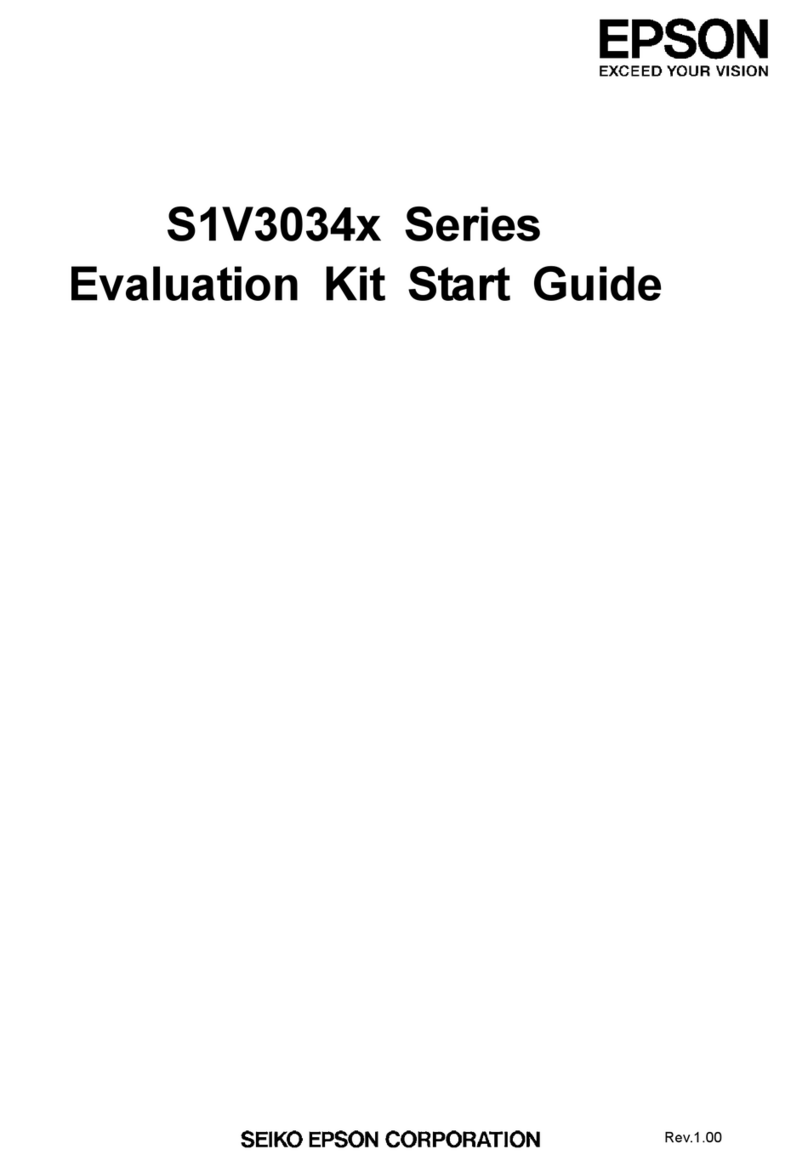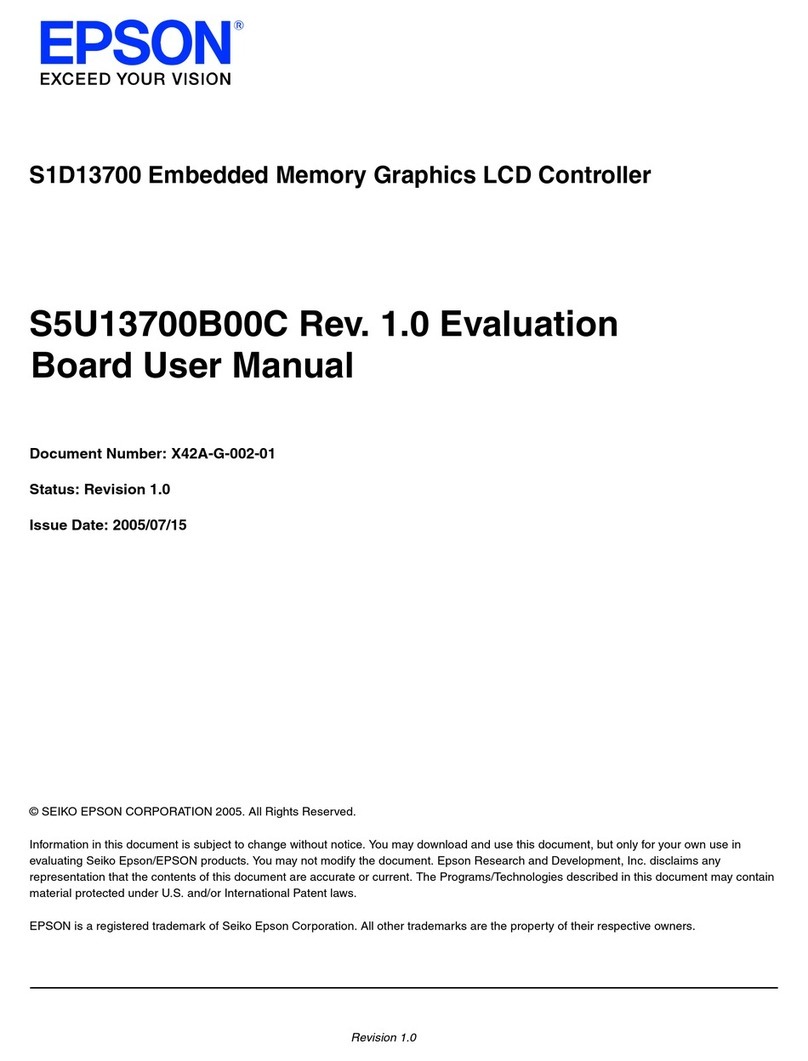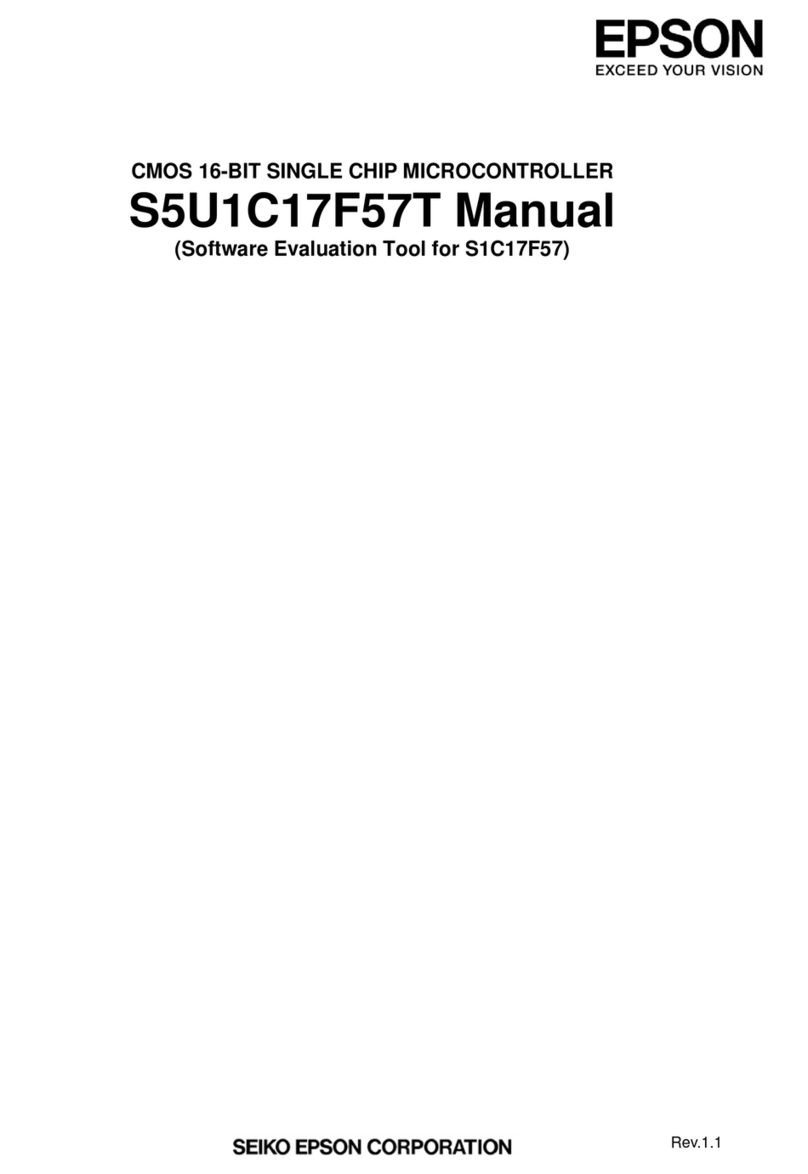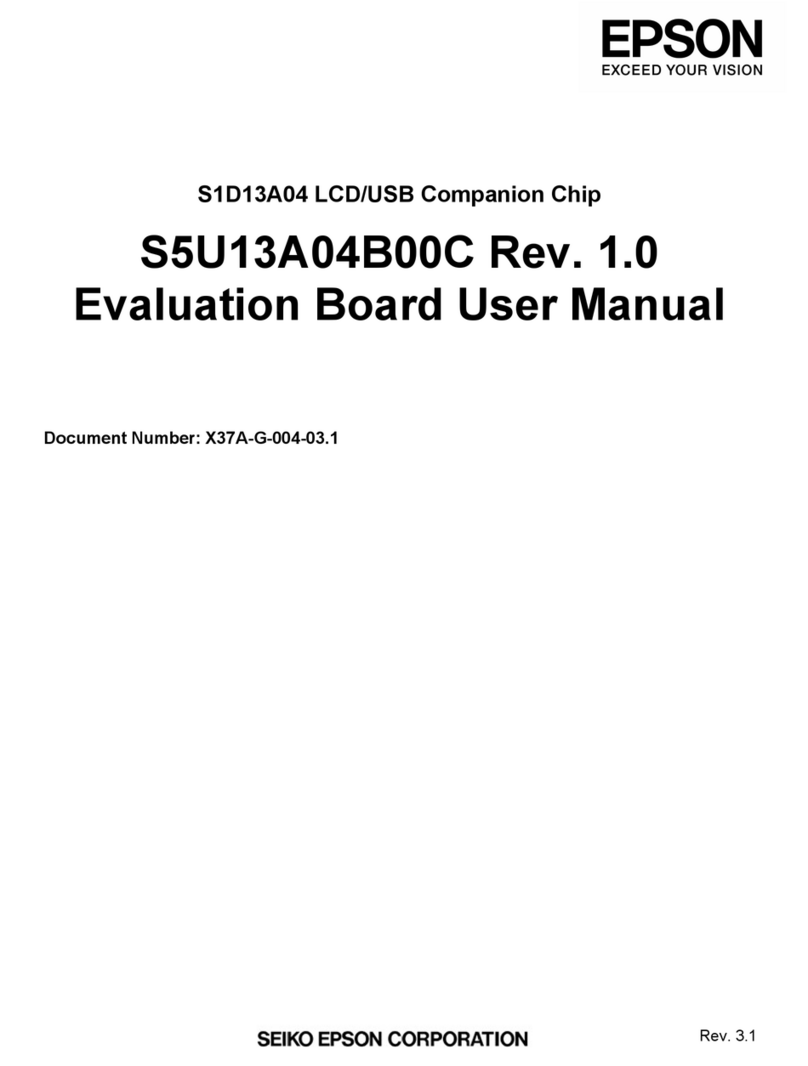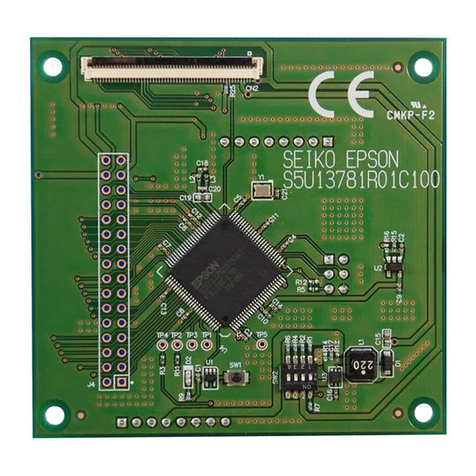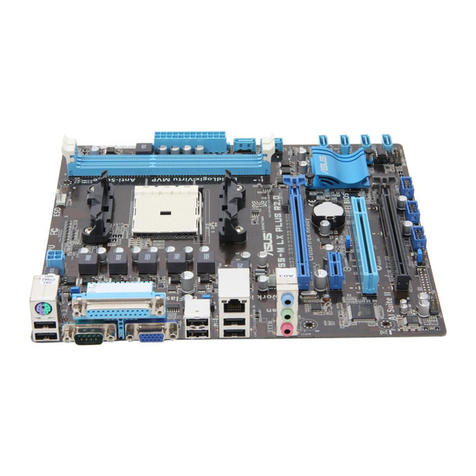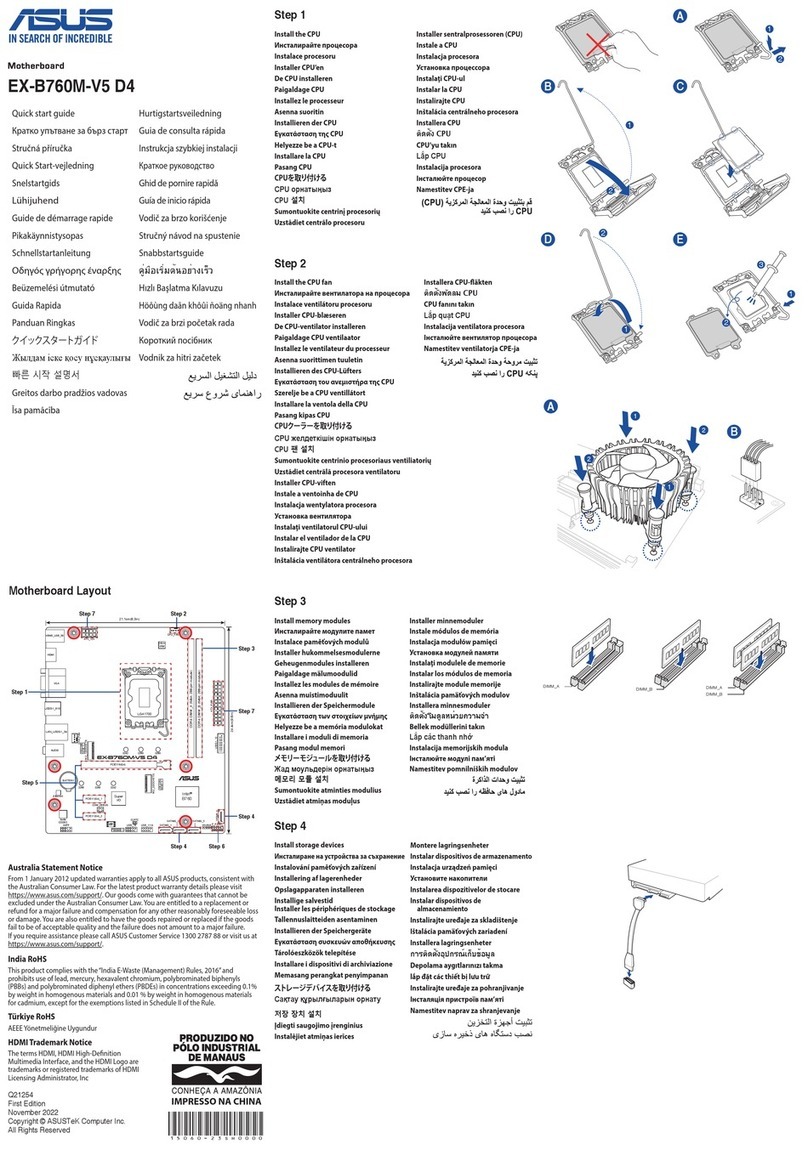
Epson Research and Development Page 3
Vancouver Design Center
S5U13513P00C100 Evaluation Board User Manual S1D13513
Issue Date: 2010/09/06 X78A-G-003-01
Revision 1.1
Table of Contents
1 Introduction . . . . . . . . . . . . . . . . . . . . . . . . . . . . . . . . . . . . . . . . 5
2 Features . . . . . . . . . . . . . . . . . . . . . . . . . . . . . . . . . . . . . . . . . . 6
3 Installation and Configuration . . . . . . . . . . . . . . . . . . . . . . . . . . . . . . 7
3.1 Configuration DIP Switch . . . . . . . . . . . . . . . . . . . . . . . . . . .7
3.2 Configuration Jumpers . . . . . . . . . . . . . . . . . . . . . . . . . . . 10
4 Technical Description . . . . . . . . . . . . . . . . . . . . . . . . . . . . . . . . . 13
4.1 Power . . . . . . . . . . . . . . . . . . . . . . . . . . . . . . . . . 13
4.1.1 Power Requirements . . . . . . . . . . . . . . . . . . . . . . . . . . . . . . . . . 13
4.1.2 Voltage Regulators . . . . . . . . . . . . . . . . . . . . . . . . . . . . . . . . . . 13
4.1.3 S1D13513 Power . . . . . . . . . . . . . . . . . . . . . . . . . . . . . . . . . . . 13
4.2 Clocks . . . . . . . . . . . . . . . . . . . . . . . . . . . . . . . . . 14
4.3 Reset . . . . . . . . . . . . . . . . . . . . . . . . . . . . . . . . . . 14
4.4 Host Interface . . . . . . . . . . . . . . . . . . . . . . . . . . . . . . 15
4.4.1 Connecting to the Epson S5U13U00P00C100 USB Adapter Board . . . . . . . . . 15
4.4.2 Connecting to the Epson PC Card Extender Board . . . . . . . . . . . . . . . . . . 15
4.4.3 Direct Host Bus Interface Support . . . . . . . . . . . . . . . . . . . . . . . . . . 16
4.5 LCD Panel Interface . . . . . . . . . . . . . . . . . . . . . . . . . . . . 17
4.6 Camera Interface . . . . . . . . . . . . . . . . . . . . . . . . . . . . . 18
4.7 YUV Output for TV Display . . . . . . . . . . . . . . . . . . . . . . . . 19
4.8 Keypad Interface . . . . . . . . . . . . . . . . . . . . . . . . . . . . . 19
4.9 PWM Outputs . . . . . . . . . . . . . . . . . . . . . . . . . . . . . . 19
4.10 GPIO Connections . . . . . . . . . . . . . . . . . . . . . . . . . . . . 19
4.11 JTAG Connector . . . . . . . . . . . . . . . . . . . . . . . . . . . . . 20
5 Parts List . . . . . . . . . . . . . . . . . . . . . . . . . . . . . . . . . . . . . . . . 21
6 Schematic Diagrams . . . . . . . . . . . . . . . . . . . . . . . . . . . . . . . . . . 24
7 S5U13513P00C100 Board Layout . . . . . . . . . . . . . . . . . . . . . . . . . . . 28
8 References . . . . . . . . . . . . . . . . . . . . . . . . . . . . . . . . . . . . . . . 30
8.1 Documents . . . . . . . . . . . . . . . . . . . . . . . . . . . . . . . 30
8.2 Document Sources . . . . . . . . . . . . . . . . . . . . . . . . . . . . 30
9 Technical Support . . . . . . . . . . . . . . . . . . . . . . . . . . . . . . . . . . . 31
9.1 EPSON Display Controllers (S1D13513) . . . . . . . . . . . . . . . . . . . . 31
9.2 Ordering Information . . . . . . . . . . . . . . . . . . . . . . . . . . . 31
